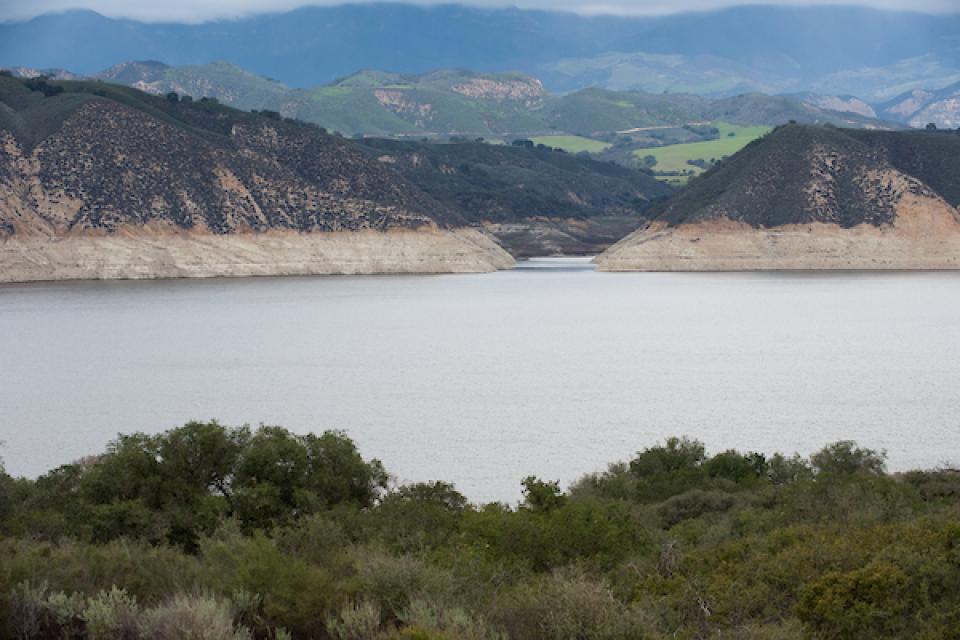How Private Capital is Speeding up Forest Restoration in the Sierra Nevada that Benefits Water
Dear Western Water readers:
 The majestic beauty of the Sierra
Nevada forest is awe-inspiring, but there is a problem: A century
of fire suppression and logging practices have left trees too
close together. Drought and beetle infestations have killed
millions of trees. Coupled with debris littering the forest
floor, it’s a wildfire waiting to happen.
The majestic beauty of the Sierra
Nevada forest is awe-inspiring, but there is a problem: A century
of fire suppression and logging practices have left trees too
close together. Drought and beetle infestations have killed
millions of trees. Coupled with debris littering the forest
floor, it’s a wildfire waiting to happen.
Fires devastate the Sierra watersheds upon which millions of Californians depend. Fixing this could take a decade in any watershed. But in the North Yuba River watershed northeast of Sacramento, the effort has been kicked into high gear thanks to an innovative infusion of public and private sector dollars that fund forest projects with many benefits — including improved water supply.
Western Water’s Gary Pitzer explains why this project is expected to shave years off the work, and how it could benefit water users downstream. Read the full story here.
Water Around the West
Here are five don’t-miss articles from the last week:
Caps on groundwater use create a new market in California. The Economist magazine takes a look at a fledgling water market in Ventura County that could be a model for areas in California that are working to figure out how to meet the requirements of the state’s Sustainable Groundwater Management Act.
New maps show how little is left of West Coast estuaries. The San Francisco Chronicle’s Peter Fimrite reports on a cutting-edge survey led by the National Oceanic and Atmospheric Administration that documented dramatic decreases in wetland habitat around San Francisco Bay, the Sacramento-San Joaquin River Delta and nearly 450 other bays, lagoons, river deltas and coastal creek mouths throughout the West.
The West is trading water for cash. The water is running out. Luke McGrath, writing for Bloomberg, examines how desert farmers with valuable claims to the Colorado River’s waters are making multimillion dollar deals with thirsty Western cities in a bid to delay the inevitable.
Lessons Australia’s water reform offers in science, politics and sustainable watersheds. Jose Bolorinos, writing for Stanford’s Water in the West, explores the successes and failures of Australia’s recent reform of the Murray-Darling Basin and the lessons they hold for policymakers in California and elsewhere who are likely to grapple with the environmental repercussions of extreme drought in the future.
A trailblazing plan to fight California wildfires. Nicola Twilley, writing in The New Yorker, explores efforts to better manage Sierra Nevada forests to reduce catastrophic wildfires and improve runoff — and the challenges that can impede those efforts.
Water Word of the Day
 Springs Springs
are where groundwater becomes surface water, acting as openings
where subsurface water can discharge onto the ground or directly
into other water bodies. As a result, springs often serve as
headwaters to streams. Learn more about the different kinds of
springs around California in Aquapedia, our free,
vetted online water encyclopedia.
Springs Springs
are where groundwater becomes surface water, acting as openings
where subsurface water can discharge onto the ground or directly
into other water bodies. As a result, springs often serve as
headwaters to streams. Learn more about the different kinds of
springs around California in Aquapedia, our free,
vetted online water encyclopedia.
At the Foundation
 LAST CHANCE: Our
Edge of Drought
Tour, Aug. 27-29, ventures through the Santa
Barbara region to examine the portfolio approach being taken to
the challenges of limited surface and groundwater supplies by
several local agencies as they work to build drought resilience
for the future. We’ll explore solutions such as ocean and
brackish water desalination, advanced purification and
groundwater injection and pervious concrete retrofitting for
groundwater recharge, as well as cloud seeding and
atmospheric river research. Here’s where to sign
up.
LAST CHANCE: Our
Edge of Drought
Tour, Aug. 27-29, ventures through the Santa
Barbara region to examine the portfolio approach being taken to
the challenges of limited surface and groundwater supplies by
several local agencies as they work to build drought resilience
for the future. We’ll explore solutions such as ocean and
brackish water desalination, advanced purification and
groundwater injection and pervious concrete retrofitting for
groundwater recharge, as well as cloud seeding and
atmospheric river research. Here’s where to sign
up.
Water Academy
 California thrives on a complex and
diverse network of natural waterways and man-made reservoirs and
aqueducts — including federally, state and locally funded
projects — as well as wild and scenic rivers and natural lakes.
With our poster-size California Water
Map, you can learn more about key issues facing
California water, including supply, use, projects, the
Sacramento-San Joaquin Delta, wild and scenic rivers and the
Colorado River. Here’s where to get
yours.
California thrives on a complex and
diverse network of natural waterways and man-made reservoirs and
aqueducts — including federally, state and locally funded
projects — as well as wild and scenic rivers and natural lakes.
With our poster-size California Water
Map, you can learn more about key issues facing
California water, including supply, use, projects, the
Sacramento-San Joaquin Delta, wild and scenic rivers and the
Colorado River. Here’s where to get
yours.








